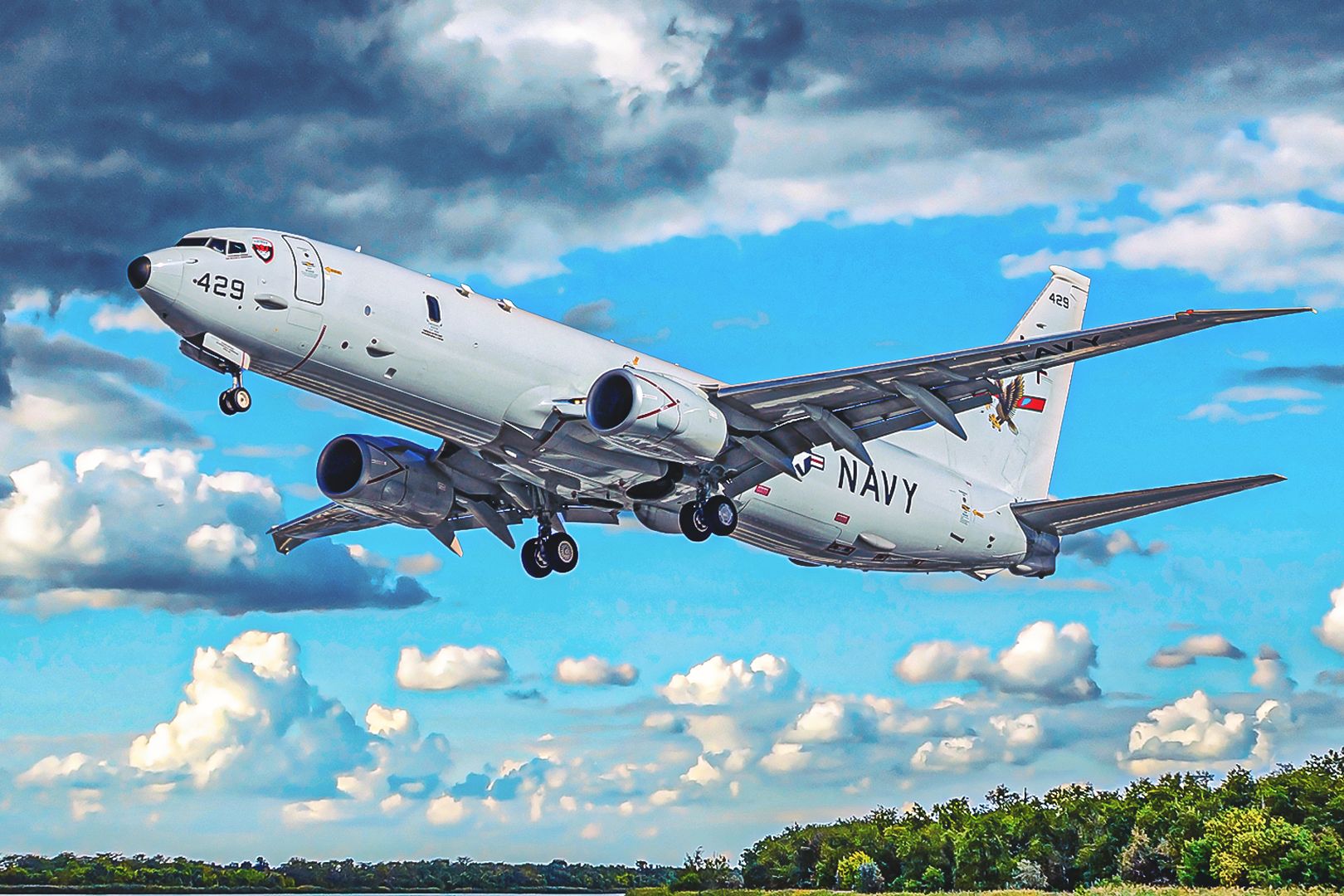Summary P-8 Poseidon is a key maritime patrol aircraft for US and allies Poseidon has advanced sensor systems for effective search & track missions Armed with Mark 54 torpedoes and Harpoon missiles, enhancing anti-ship and anti-submarine capabilities The Boeing P-8 Poseidon has become the go-to maritime patrol and reconnaissance aircraft and is able to carry out many tasks for the US Navy (and allies). It was built to replace the aging P-3C Orion fleet (which was developed in the 1960s). Not only is the P-8 Poseidon used for maritime reconnaissance, but it is also a fighting machine carrying a range of anti-ship and anti-submarine weapons onboard.
The Poseidon is a valuable maritime patrol aircraft and is one of the first lines of defense against enemy submarines. The US and allies' maritime patrol aircraft of choice The Poseidon is now operated by (or ordered by) the US, New Zealand, Australia, the UK, Canada, South Korea, and others. With so many allies operating the platform, its performance is further enhanced, enabling easier cooperation and intelligence sharing between the allies.

P-8 Poseidon operators: Number ordered: First deliveries: Australia: 12 2022 Canada: 14 planned 2026 Germany: 8 planned 2025 India: 12 before 2022 New Zealand: 4 2023 Norway: 5 2022 South Korea: 9 2024 United States: 139 2013 United Kingdom: 9 2020 Derived from a Boeing 737-800, the Poseidon is capable of a wide range of missions, including anti-submarine warfare and anti-surface warfare. It has mission system features like the APY-10 radar with modes for high-resolution mapping, an acoustic sensor system (including passive and multi-static sonobuoys), an electro-optical/IR turret, and electronic support measures. This equipment allows the Poseidon to search and track over a wide area.
Role: Anti-submarine warfare Anti-surface warfare Search and rescue Maritime surveillance Overland surveillance Weapon systems are called systems for a reason and the Poseidon combines with other platforms in a powerful network. The P-8 can operate with other advanced maritime patrol assets like the new advanced Northrop Grumman MQ-4C Triton. The US Navy operates the MQ-4C Triton while Australia is now receiving its first Tritons and basing them in northern Australia .
Here are five things you might not know about the most "commercial" military jet currently operated. A submarine hunter One of the focal points for the P-8 is the area between Greenland-Icleland-UK (GIUK) Gap. The Gap was an important anti-submarine focus point during the Cold War.
The World War II's Battle of the Atlantic showed just how damaging enemy vessels could be in the North Atlantic. In the event of a major war in Europe, it would be essential to keep the Atlantic shipping lanes open and to keep the Soviet submarines from coming through "the Gap." ".
..its improved capabilities, the P-8A Poseidon is the Navy’s primary air asset to effectively counter Russia’s most technologically advanced submarines capabilities, the P-8A Poseidon is the Navy’s primary air asset to effectively counter Russia’s most technologically advanced submarines.
.." - USNI News Patrolling and monitoring the Gap remains a priority for Norway, the UK, the US, and other states.
While the P-8 has been called the perfect submarine hunter , it is perhaps the first layer of a multi-layered system of antisubmarine warfare (which includes submarine-hunting fridges, submarines, helicopters, and other systems). Much of the P-8's role in countering submarines is dropping sonobuoys so that the Navy can listen for the submarines and then choose how to respond to them after that. Capacity: 129 sonobuoys UNIPAC III deployable life rafts Maritime markers "P-8 Anti-Submarine Warfare The P-8 executes anti-submarine warfare (ASW) through an integrated sensor suite to conduct search, detection, classification, localization, tracking and attack of submarines.
The P-8 utilizes a state-of-the-art acoustics sensor suite, sonobuoys, electronic support measures (ESM), inverse synthetic aperture radar (ISAR) and the delivery of torpedoes for sub-hunting." - Boeing While Russia continues to possess a large submarine fleet, it is a shadow of what the Soviet Union once was. Today, much of the focus for the P-8 missions is over in the western Pacific.
There they are used to patrol and monitor the vast expanses around Korea, Taiwan, and north of Australia, among other regions. The Royal New Zealand Air Force (RNZAF) is small, but they make the most their small size. The P-8 Poseidon exemplifies this.
Weapons carried by the P-8 Poseidon When armed, the P-8 Poseidon can carry Mark 54 torpedoes and Harpoon anti-ship missiles, which allow it to engage both ships and submarines. The Mark 54 Lightweight Torpedo carries a 100-pound explosive warhead and is used by the US Navy and many US allies. The Mark 54 is for use against both surface ships and submarines (as an aircraft-launched anti-submarine weapon).
The torpedo integrates existing torpedo hardware and software from the MK 46 and MK 50 torpedo programs. The Mark 54 is being quite literally taken to new heights. The Mark 54 is being adapted as the High-Altitude Anti-Submarine Warfare Weapon Capability (HAAWC) Air Launch Accessory (ALA).
This has turned a Mark 54 torpedo into a precision glide bomb that can be deployed up to 30,000 feet, enabling the Posedion to launch torpedoes at higher altitudes and longer distances. The US Navy only declared the HAAWC's Initial Operating Capability in 2022. The Harpoon is an all-weather, over-the-horizon, anti-ship missile using active radar homing as it flies just above the water to evade defenses.
Besides the Poseidon, the Harpoon can be launched from naval vessels, submarines, and from coastal defense batteries..



















